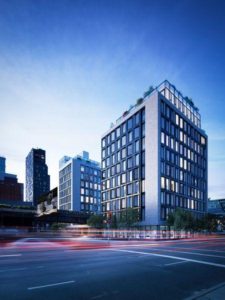Whether you own a commercial building or a multi-unit residential structure, you need to ensure that it is up to current fire codes in your township. This means it needs to have an active fire protection system in place.
What is an active fire protection system?
An active fire protection system consists of a variety of different fire prevention solutions ranging from manual fire suppression components to automatic firefighting systems designed to douse the flames at the point of origin.
Manual Fire Suppression
There are three primary types of manual fire suppression used in most active fire protection systems – fire extinguishers, fire blankets, and wet or dry standpipes. Fire extinguishers are among the most common used because they are required in all commercial buildings and they require no training to use. Fire extinguishers are also suitable for normal fires, liquid fires, and electrical fires, so they can offer a wide range of protection against small stage fires.
Fire blankets are blanket-like sheets of fire-retardant material made from either Kevlar or fiberglass. A fire blanket can be used to cover and smother a small fire, or it can be wrapped around someone whose clothing has caught fire.
Standpipe systems are more commonly found in larger, multi-story buildings and they can either be wet (always filled with water) or dry (the fire department pumps water into the system). Wet systems feature attached hoses that can be used by the public to help fight the fire until the fire department arrives, while dry systems can only be used by the fire department. As more and more commercial structures install sprinkler systems as their primary source of fire prevention, standpipes are gradually becoming less common.
Automatic Fire Suppression
Automatic fire suppression involves systems that automatically turn on whenever triggered by an alarm. This can include a sprinkler system, a foam suppression system, or gaseous clean agent. Sprinkler systems tend to be the most common type of automatic fire prevention system used in commercial and residential structures. They are connected to the city water line, so water access is reliable and consistent. They are activated whenever the heat from a fire causes the fusible link or glass component in the sprinkler head to break.
A foam suppression system works by smothering the fire with a thick layer of foam. This type of system can use either low, medium, or high expansion foam. Low expansion foam expands up to 20 times its size and is most used in places where hydrocarbons are stored. Medium expansion foam expands up to 200 times its size, so it is most used in outdoor settings. Because it is used outside, medium expansion foam is also the densest of the three types. High expansion foam can expand up to 1,000 times its size, making it ideal for use in large areas like airplane hangars and ship holds.
A gaseous clean agent system is one that uses an inert gas to smother the flames by removing its main fuel source, oxygen, from the room. This type of system is most used in areas where water or foam systems will cause excessive damage, such as in computer rooms and electrical rooms. Because this type of system removes the oxygen from the space, it can be a suffocation risk to occupants. Therefore, it will usually have a short delay before being activated to give the occupants time to evacuate.
How Often Should Your Active Fire Protection System Be Inspected?
The National Fire Protection Association (NFPA) recommends that active fire protection systems should be inspected at least four times per year by experienced fire prevention experts to ensure that the system will deploy in the event of a fire emergency. Monthly and/or weekly inspections should also be conducted by trained people employed by the building’s owner.
If you need to have your active fire protection system inspected or upgraded, Metro Fire Inspections is a full-service fire protection system design, installation, and upgrade company that can provide you with the services and solutions you need. Find out why we are one of the most trusted fire prevention companies in New York. Contact us today to learn more or click here for a free quote.





